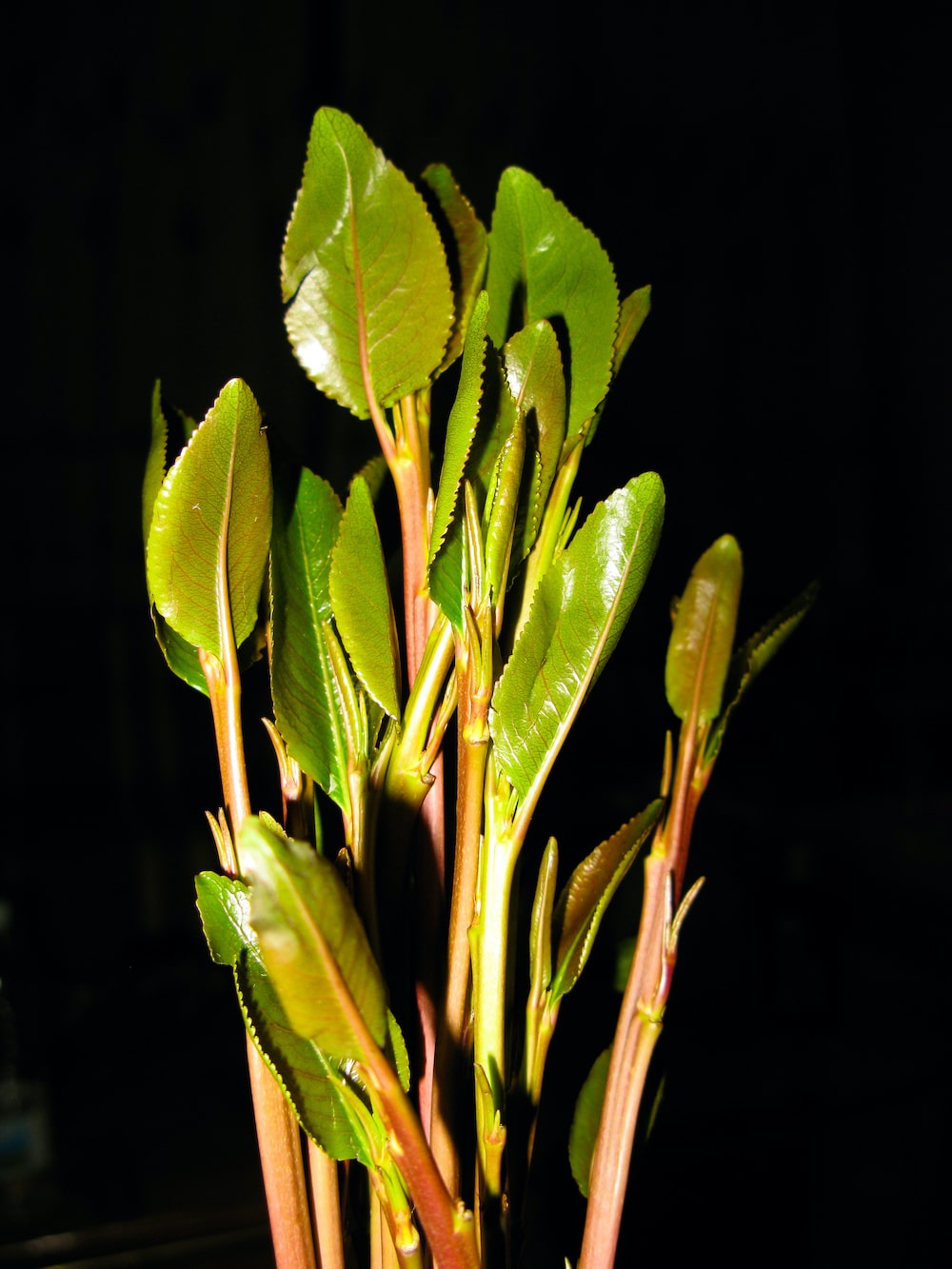What Is Khat? Khat, pronounced “cot,” is a plant that grows in East Africa and the Arabian Peninsula. The plant’s scientific name is Catha edulis and khat refers to the leaves and shoots of the plant. Since the 13 th century, it has been used as a recreational drug
Click here to view original web page at www.addictioncenter.com
What Is Khat?

Khat, pronounced “cot,” is a plant that grows in East Africa and the Arabian Peninsula. The plant’s scientific name is Catha edulis and khat refers to the leaves and shoots of the plant. Since the 13th century, it has been used as a recreational drug by indigenous people of the Arabian Peninsula, East Africa, and the Middle East. To this day, people chew fresh khat to release a stimulant effect. Khat is kept in the cheek and chewed intermittently to extract the juices and release more of its effects. Khat can also be brewed as a tea or made into a chewable paste. People with a khat addiction prefer fresh leaves, because within 48 hours of cutting the plant, it will start to lose potency. Khat can also be smoked or sprinkled onto food as powder.
Cathinone (keto-amphetamine)and Cathine (d-norpseudoephedrine) are the primary psychoactive ingredients in Khat. Both are chemical compounds with structural similarities to amphetamine. In the United States, Cathinone is a Schedule I controlled substance, since it has a high potential for abuse with no medical utility. Other Schedule I drugs include Heroin, Ecstasy, and LSD.
Cathine is a Schedule IV controlled substances, since it has medical benefits yet still poses moderate risks for dependence. Like Cathonine, Cathine belongs to the amphetamine class of drugs and produces stimulant effects, but with less potency. As a result, cathine is only a Schedule IV controlled substance, a drug with a low potential for abuse and dependence. This classification includes Xanax, Valium, Ambien, and Tramadol. Khat is illegal in the United States, but it is legal in parts of Europe, East Africa, and the Arabian Peninsula.
Khat Use Around the World
Khat has been used for decades as social tonic, with some of its users comparing it to coffee. In Ethiopia, men gather together to talk about life and chew on khat leaves. In many social interactions, it takes the place of alcohol. It is also used to provide energy, stay awake at work, and induce euphoria. Khat users in East Africa and the Arabian Peninsula defend the plant, saying it is part of their tradition. Its popularity stimulates the economy and acts as a lucrative cash crop in Yemen and Somalia.
About 10 million people around the world chew khat, and the growth of this plant generates hundreds of millions of dollars each year. The city of Awaday in Ethiopia is home to the world’s biggest market of khat, with $80 million changing hands in one night alone, according to broadcast media company DW Akademie. The market operates 24 hours a day and provides employment to men and women who cut, clean, package, transport, and sell the branches. Because khat’s potency is reduced within 48 hours, there is a rush to get the plant to its customers, and much of the work is done overnight because the sun will burn the leaves.
The practice of consuming khat is old, but tradition does not mean it is without consequence. People with a khat addiction can suffer from a long list of ailments and may not realize that the plant holds many dangers to the mind and body. In recent years, the plant has been emerging more often in American culture causing officials to outlaw it. However, the laws are not stopping some people with a khat addiction to use and spread the drug.
Khat Addiction
In the United States, khat addiction is prevalent among immigrants from Ethiopian, Somali, and Yemeni cultures. The National Drug Intelligence Center states that use of the plant is highest in cities with those immigrant populations such as Boston, Columbus, Dallas, Detroit, Kansas City, Los Angeles, Minneapolis, Nashville, New York City, and Washington, D.C. A U.S. News report from February 2019 said that about 1,000 pounds of khat was seized in the Washington area after smugglers attempted to disguise it as green tea. In December 2019, a Rochester woman was arrested after a traffic violation and was found to be chewing on khat and in Minneapolis, police seized over 500 pounds of freeze-dried khat. These 3 stories are a few of the many Khat cases appearing in recent years. Some common street names for khat include:
- Abbysinian tea
- African salad
- Cat
- Catha
- Chat
- Gat
- Jaad
- Jat
- Kat
- Miraa
- Mairungi
- Oat
- Qat
- Qaad
- Tohai
- Tschat
Don't Let Covid-19 Stop You from Getting Help
Rehabs are still open!
Although some users compare khat to coffee, it has more similarities with the drug cocaine and other amphetamines. Once consumed, users feel increased alertness, energy, euphoria, increased talkativeness, decreased appetite, and excitement. The heart and breathing rates are increased, and the body temperature and blood pressure is elevated. Appetite is reduced and fatigue is lessened, making khat users rely on the drug to fuel them through work or “improve” their sociability. Short term effects of the drug include an elevated heart rate, constipation, irritability, insomnia, euphoria, manic behavior, breathing difficulties, and increased motor activity.
Khat addiction develops when the user has a psychological dependence on the plant. A hallmark sign of addiction to Khat is psychological dependence, a state of adaptation to a drug which causes symptoms of withdrawal upon cessation or dose reduction. Other symptoms of Khat addiction include cravings for Khat, preoccupation with the drug, and giving up social or professional responsibilities to use Khat. Studies indicate that Khat can induce dependence similar to that which amphetamine users experience.
Chronic Khat abuse leads to mental health impairment and behavioral changes. High doses of Khat combined with a lack of sleep can cause paranoid or grandiose delusions, violence, and schizophrenia psychosis. Hallucinations may also be present, caused by the high accumulation of dopamine in the brain. The long-term effects are potentially life threatening and include anorexia, hypertension, gastric disorders, liver damage, and an increased risk for heart disease, heart attacks, and cancer of the mouth. Chewing khat has destructive effects on oral health and is commonly consumed with tobacco and sugary drinks to offset the bitter taste of the plant. Khat users present with lesions on the teeth, severe staining of the teeth, and sometimes have gingival recession and bleeding.
Ready to get help?
Don’t waste another second. Enter your number to receive a call
from a compassionate treatment expert.
Khat Withdrawal and Treatment
Withdrawing from khat is very unpleasant and can be worsened based on the frequency of previous use. According to a 2017 study, the most common Khat withdrawal symptoms are:
- Cravings
- Fatigue
- Depression
- Irritability
- Increased appetite
- Nightmares
- Increased need for sleep and/or insomnia
- Excessive sweating and feeling hot
- Tremors in various parts of the body
Some of these symptoms, such as depression, unpleasant dreams, and slowing of activity are similar to the withdrawal signs of cocaine.
Withdrawal from Khat generally lasts between 24 to 48 hours. More commonly, the study reported that most participants reported withdrawal symptoms for 24 hours. Withdrawal from Khat is not life-threatening. However, if someone has pre-existing medical issues, they should seek medical attention.
The safest way to detox from an addictive substance is at a detox treatment center that can provide the knowledge and comfort each patient needs. If you or someone you know is struggling with a khat addiction, please contact a compassionate treatment provider who can guide you towards recovery. Khat may be an old tradition, but that does not take away its dangerous side effects. Anyone who chews khat should seek treatment and break the addiction as soon as possible.

